- Home
- Michael Newton
How to Write Action Adventure Novels Page 6
How to Write Action Adventure Novels Read online
Page 6
Cast: Mack Bolan
Amos Carr—ex-cop, consultant on Satanic cults
Cassandra Poole—a “white” witch, friend of Carr’s
Lucian Slate—occult celebrity, advisor to “Apocalypse”
Owen York—ex-Mansonite, Satanic killer, works for Slate
Jordan Braithwaite—televangelist in league with Satanists
“Apocalypse” band members—
1. Clay Deatheridge, aka “Death”: lead singer
2. Mike O’Neal, aka “Skull”: lead guitar
3. Freddy Sykes, aka “Hipper”: bass guitar
4. Tommy Piersall, aka “Ax”: keyboards
5. John Beamish, aka “Mephisto”: drums
Outline:
Prologue—Open w/sacrificial murder of young groupie
Ch. 1—Bolan meets Amos, gets briefing; they go to concert
Ch. 2 - Split POVs w/“Apocalypse” in concert
Ch. 3—Split POVs, across town, at Braithwaite’s revival
Ch. 4—Sacrifice of groupie from the new concert audience
Ch. 5—Bolan/Amos at murder scene; interact w/cops
Ch. 6—Amos takes Bolan to meet Cass, discuss local cults
Ch. 7—Intro. Slate, holding ritual for band members
Ch. 8—Split POVs: Amos solo; Bolan/Cass tour underground
Ch. 9—Regroup w/Amos; hear Braithwaite on radio
Ch. 10—Intro. York + team at 2nd concert, picking victims
Ch. 11 -Split POVs: Bolan attends “white” coven w/Cass
Ch. 12—Braithwaite meets Slate; payoff + strategy session
Ch. 13—W/York in graveyard ritual; b.g. + Interiors
Ch. 14—Split POVs: Cass solo, accidentally alerting York
Ch. 16—Split POVs: Slate + York move against “snoopers”
Ch. 16—Amos lured into ambush; escapes + goes to Cass
Ch. 17—Cass snatched by York; Amos wounded, warns Bolan
Ch. 18—Bolan grills members of “Apocalypse” for info.
Ch. 19/20—Showdown w/cultists; York rats on Braithwaite
Ch. 21—Bolan settles accounts w/Braithwaite
Epilogue—Visit Amos in hospital; split w/Cass for R & R
_______________
This simple, one-page outline was the backbone for a novel exceeding 75,000 words in length. The notations “b.g.” and “interiors” in Chapter 13 refer to insertion of background and interior viewpoints for a specific character, of which more, later. Various notations of “Split POVs” refer to chapters I planned to subdivide, approaching crucial scenes from several different points of view.
As I approach each chapter in its turn, I normally prepare a much-abbreviated “slap-dash” outline of the major action. Thus, for Chapter 8, I might prepare a sketch as follows:
_______________
Ch. 8-Split POVs:
A) Amos interviews his contacts in the underground
B) Cass leads Bolan on a tour of occult shops + hangouts
C) Magic shop proprietor phones contacts to report that “someone” is investigating “black” practitioners
_______________
Each scene will be approached from a distinct and separate point of view, resulting in a chapter that should tip the scales around four thousand words. There is no mandatory word-count for a given scene, of course, but publishers will generally specify that finished manuscripts must reach a certain minimum in words (or pages) to fulfill your contract. Falling short by several thousand words—or several dozen pages—will result in calls for rewrites and additions, which may prove extremely awkward once you’ve put a tale to bed. It’s easier, and more professional, to pace yourself on works in progress, feeding in material that meets the story’s needs.
(This doesn’t mean that you should pad your script outrageously by throwing in the kitchen sink on every scene. If you are working on a contract that demands a manuscript of 60,000 words, don’t send the editor a thousand pages of material. He won’t appreciate the “bonus,” doesn’t need the eye strain, and his budget probably will not accommodate a book that makes the Bible look like D.C. Comics.)
Coherence, or the Problem of the Disappearing Heavy
Perhaps the most important single element of plotting is coherence. Mysteries are fine, and complicated subplots sometimes help a book if you can pull them off, but every action in your story must eventually make sense. It’s fine to keep the motives of your characters a secret for a while, but if the curtain never rises on a logical solution, editors will probably suggest you spend a few more hours at the drawing board. Loose ends and unresolved conundrums don’t make happy readers, and unhappy readers may be prone to spend their time (and money) with another author next time out.
Confession time. I once forgot to kill a major villain at the climax of a novel. Like the bullet-count in Dirty Harry’s .44, he slipped my mind and got away in the confusion of the final showdown. I did not intend for him to get away, you understand; I simply lost him. No one noticed in the editorial department, and I didn’t see the glitch myself, until the book was published. Everything worked out—I brought the hairball back and killed him in a sequel—but it left me with a feeling that I’d fumbled on the two- yard line and nearly blown the game.
“The Formula”
Whenever genre plotting is discussed, someone inevitably raises specters of “The Formula.” Come on, you know the rap, where adding “X” and “Y” inevitably gives you “Z”. Depending on your point of view, The Formula may be an easy ticket to the big-time, or an evil monster that prevents most genre writing from attaining elevation to the ranks of “literature.”
We may as well face facts: The Formula exists. In every genre—be it action, Western, horror, mystery, romance—there are established plot conventions that your readers (and your critics) automatically expect to find in each and every tale. To some extent, the elements of formulaic writing may be unavoidable in genre fiction, but aspiring authors should not be intimidated—or enslaved—by the requirements of The Formula.
In basic terms, the formula for modern action/adventure includes (1) a strong protagonist, confronted by (2) some mortal threat from (3) selected heavies, leading to (4) a gruelling pursuit, resolved through (5) a violent confrontation or series of same. The pursuit can go either way, with your hero playing fox or hound as you prefer, but you must always finish strong.
(A former editor of my acquaintance once tried publishing a totally nonviolent action novel. Anybody care to guess why he’s no longer in the business?)
If you think about it, you will see there’s ample room for individuality within the basic recipe, but caution is required. If you desert the formula completely, readers may not recognize your work. Conversely, if you cling too slavishly to formula, you may discover that your stories all begin to sound alike.
Throughout his early years with Pinnacle, Don Pendleton was faced with editorial demands that he adhere to formula in the production of adventure novels. Heated calls demanding higher body-counts, more deaths per page, were not unusual, but for the most part Don stuck by his guns and wrote the stories his way, with a keen eye on ingredients that made The Executioner a hit in the beginning.
On the flip side, Ian Fleming was reduced to something like self-parody by his adherence to The Formula in writing James Bond stories. In his final full-length novel, The Man with the Golden Gun, Fleming fell back on the Caribbean setting familiar from two previous books—Live and Let Die and Doctor No—while incorporating the “hood’s congress” from Goldfinger and the miniature train from Diamonds Are Forever. More derivative than inspirational, the tale is generally considered Fleming’s least successful work.
Occasionally, you may find yourself confronted with an editor who worships at the feet of formula, demanding that your work adhere to certain rigid guidelines. Such conditions normally arise in work-for-hire agreements, dealing with production of a “house name” series such as Longarm or Nick Carter, where a team of writers grind out
novels on a predetermined schedule, losing their identities in favor of a macho-sounding, nonexistent “author.” The producers of one adult Western series are known for their insistence that writers include at least three sex scenes per manuscript (coupling the hero with a different woman for each encounter), and similar guidelines are often applied to action scenes. When I ghosted the first two novels in the M.I.A. Hunter series for Berkley-Jove in 1985,1 had instructions to incorporate two martial arts encounters in each story. It was not a problem, and I did not feel creatively confined, but I present it here as an example of The Formula in action.
In all fairness, I should say that slavish adoration of The Formula is not a kiss of death, per se. John Saul has been producing carbon-copy novels in the horror market for a long, long time, and doing very well besides. You know the story: Once upon a time, a hundred years ago, something terrible happened in Anytown, U.S.A., and now it’s happening again! There’s a moral in here, somewhere, but I’m damned if I know what it is. Personally, if I knew my career was restricted to a single story, I’d shoot for Gone with the Wind, rather than a dozen cookie-cutter look-alikes of Pee Wee’s Big Adventure.
The bottom line is this, my friends: A conscientious pro respects his readers and himself. He works within the strictures of his chosen genre, but he gives his talent and imagination room to ramble. Quality is still the standard authors must be judged by, in the end. A lazy writer may get by on flashy cover art until his readers find him out, but they will find him out. And all the Day-Glo paint there ever was won’t help a rotten novel stand the acid test of audience approval.
5. The Hook
Every hero’s quest commences with a single step, and so must every story have a starting point. If you get careless and misplace your readers on the first page of your novel, you can bet they won’t be with you for the rousing climax.
Simply stated, then, you need a “hook” to catch and hold your audience, so you can reel them in. The hook has two important functions, one artistic and the other purely mercenary. Since we’re talking business here, let’s deal with money first.
Before you publish anything, you must impress an editor with your material, your style, your talent. This is where the bucks stop, literally. If prospective editors discover they can use your manuscript as an alternative to Sominex, you may as well forget about those paydays. No one—I mean no one—consciously sets out to foist a boring novel on the public. Editors will judge your work beginning with the first line that they read—in many cases, on the basis of your cover letters—and a conscientious pro makes every effort to secure a sale by leading with the good stuff.
Once you’ve got that contract in the bag, it’s time to satisfy a broader audience. Remember that you have an active share in the promotion of your novel. Cover art and advertising copy may be all it takes for some, but I’ve been known to read the first page of a story standing in the supermarket, and I’ll wager many others do the same. If that first paragraph is awkward, if it doesn’t grab me, chances are I’ll pass the author by and keep on looking.
Sharpening the Hook
Having said that much, what constitutes a “good” beginning? Obviously, that’s subjective. One man’s hook may be another’s sleeper, but I think we can arrive at some conclusions by comparing two examples.
In The Slaughter Run (Zebra, 1980), Axel Kilgore introduces both his story and his hero thus:
The wind was starting to blow up hard as Hank Frost stood on the brow of the isolated slope, watching the reddish orange orb of sun start to sink low toward the tree line, the pines offering what modest protection there was from the ice spicules pounding like tiny needles against the exposed skin of his cheeks and forehead. “At least my eyepatch will keep me warm,” he said, but to no one in particular. Frost was alone—very alone—he thought, snapping away the butt of the burnt-to-the- fingertips Camel he’d been smoking while thinking about Bess. A plane was flying overhead, a commercial jet, but it was only in books and movies, he reflected, that as the hero stood on the icy mountaintop the heroine would be sitting wistfully aboard the aircraft flying overhead—lovers, star-crossed and so close but yet so far! He closed his thoughts by verbalizing the word, “Bullshit” and pulled his ski mask from the pocket of his jacket. Bess, he thought, though he loved her dearly, wasn’t exactly the “wistful” type.
This passage, plainly speaking, is a clunker, badly overweight with surplus adjectives and phrases shoe-horned in “for drama’s sake.” Compare it to the opening of Gorky Park, penned by Martin Cruz Smith:
All nights should be so dark, all winters so warm, all headlights so dazzling.
The van jacked, stalled and quit on a drift, and the homicide team got out, militia officers cut from a pattern of short arms and low brows, wrapped in sheepskin greatcoats. The one not in uniform was a lean, pale man, the chief investigator. He listened sympathetically to the tale- of the officer who had found the bodies in the snow: the man had only strayed so far from the park footpath in the middle of the night to relieve himself, then he saw them, himself half undone, as it were, and just about froze, too. The team followed the beam of the van’s spotlight.
The investigator suspected the poor dead bastards were just a vodka troika that had cheerily frozen to death. Vodka was liquid taxation, and the price was always rising. It was accepted that three was the lucky number on a bottle in terms of economic prudence and desired effect. It was a perfect example of primitive communism.
The prose employed by Smith is economical, dynamic, with an imagery as clear as crystal. By the time I finished reading that, I knew I’d buy his next book when it hit the stands. (I did, and it was great.)
Say What You Mean … Then Shut Up
Before you start to craft your perfect hook, you should decide precisely what you hope to do with the beginning of your story. Basically, you have three options: you can sketch a setting for your readers; you can introduce a character; or you can pick the story up in progress, with an action scene.
Whichever way you go, be sure to keep in mind two fundamental tenets. Economy of language is the first; Big Brother wasn’t kidding when he told his followers that “less is more.” If you can make your point with five words, why use thirty-five? I dare say Kilgore’s flabby paragraph, examined earlier, could probably have been reduced to three or four short sentences with nothing lost—and reader interest salvaged. Clarity should be a central focus of your thoughts while writing. Picture every scene before you try describing it. If your descriptions come off sounding vague to you, how can a hapless stranger ever hope to muddle through? Precision and economy of language travel hand-in-hand.
Stage Settings
There are as many ways of setting up a scene as there are working writers in the business, but no matter how they do it, all the best pros manage to establish moods for every setting they describe. This goal can be achieved in many ways, with broad allowances for style. Let’s take a look at some examples.
In The Haunting of Hill House, author Shirley Jackson opens her tale as follows:
No live organism can continue for long to exist sanely under conditions of absolute reality; even larks and katydids are supposed, by some, to dream. Hill House, not sane, stood by itself against its hills, holding darkness within; it had stood so for eighty years and might stand for eighty more. Within, walls continued upright, bricks met neatly, floors were firm, and doors were sensibly shut; silence lay steadily against the wood and stone of Hill House, and whatever walked there, walked alone.
This passage is a classic of economy and grace. Within three sentences, we find a brief description and a capsule history of Hill House, coupled with the chilling information that it is alive, insane, and probably inhabited by something we should leave alone. The author has immediately captured our attention and set the mood for nastiness to come, while dishing out one of the finest short descriptive passages in modern literature.
In “Red Wind,” Raymond Chandler uses a stylish weather report to s
et the stage for future action with detective Philip Marlowe:
There was a desert wind blowing that night. It was one of those hot dry Santa Anas that come down through the mountain passes and curl your hair and make your nerves jump and your skin itch. On nights like that every booze party ends in a fight. Meek little wives feel the edge of the carving knife and study their husbands’ necks. Anything can happen. You can even get a full glass of beer at a cocktail lounge.
In “The Lake of the Left-Handed Moon,” author Robert Leslie Bellem puts his hero on wheels for a memorable passage ripe with foreboding:
My tires sang a tune on the dark curves and the tune was a prelude to murder. I didn’t know this at the time, of course. I knew only that the road climbed and twisted, with the mountains squeezing in on me as I tooled my jalopy up the inclined serpentine turns. Barring the merged cones of brilliance my headlamps made, I was surrounded by a blackness you could slice with a razor and get whittlings of coal.
In Houston Attack (Dell, 1985), a title from the Hawker series, author Carl Ramm stages his opening south of the border:
The bar was on the Mexican side of the Rio Grande. It was built of concrete block on a concrete slab in a border town where the desert pressed hard against the slum housing and tequila joints.
The bar had once been painted a fluorescent green. But the Mexican sun had leached the color from it, and now, beneath its red neon sign, the building looked gray in the summer darkness.
Las Almas Desconocidas.
A fitting name for such a bar, thought James Hawker.
The Bar of the Unknown Souls.
In the sixty-seventh episode of their Destroyer series, Look Into My Eyes (Signet, 1986), Warren Murphy and Richard Sapir launch the story with a nice descriptive twist:
It was better than being in Afghanistan. In Afghanistan the bandits would shoot you from ambush, or if they captured you, they would cut you into pieces very slowly. Sometimes their women did it with their cooking tools.

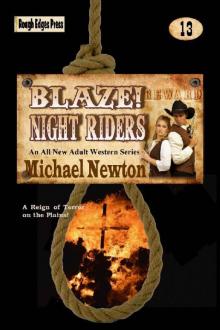 Blaze! Night Riders
Blaze! Night Riders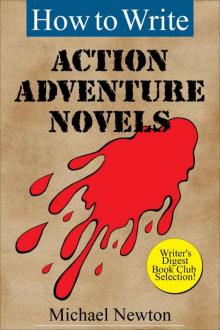 How to Write Action Adventure Novels
How to Write Action Adventure Novels Blaze! Bad Medicine
Blaze! Bad Medicine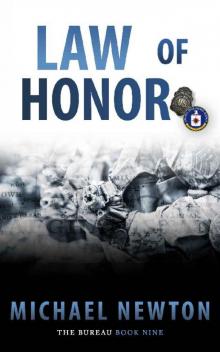 Law of Honor
Law of Honor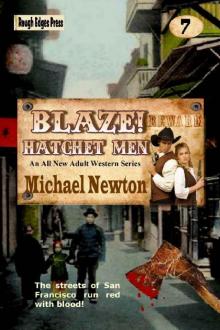 Blaze! Hatchet Men
Blaze! Hatchet Men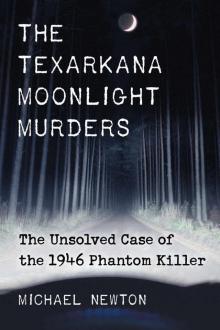 The Texarkana Moonlight Murders
The Texarkana Moonlight Murders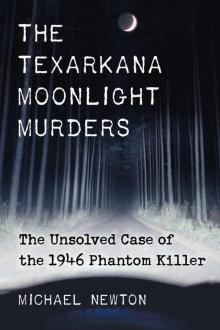 The Texarkana Moonlight Murders: The Unsolved Case of the 1946 Phantom Killer
The Texarkana Moonlight Murders: The Unsolved Case of the 1946 Phantom Killer